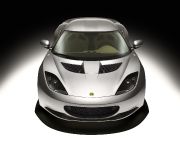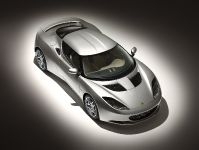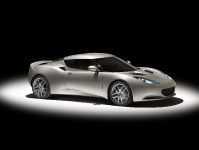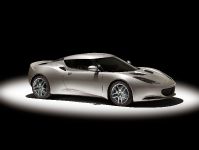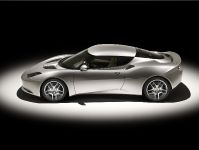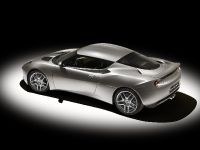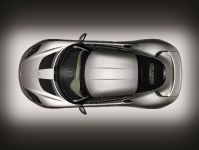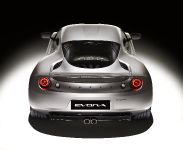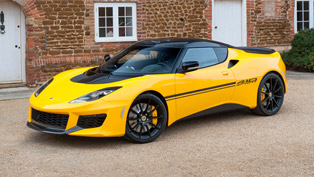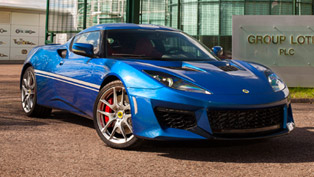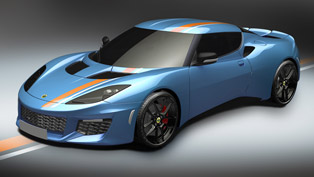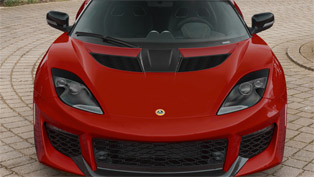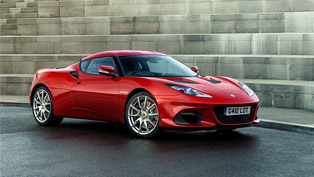Evora - Beautiful, functional and fun; the new green sportscar from Lotus
The Lotus Evora is sleek, sophisticated and socially aware. Coupling stunning looks and agile performance its impressive green credentials, prove that Evora is a cool and eco-friendly alternative to gas-guzzling 4x4's. Emissions for the brand-new sportscar are on target to beat the 225 grams of CO2 per kilometre threshold above which UK road tax rapidly increases.
Presenting the best of British design, the Evora is a masterpiece of craftsmanship. Combining 60 years of sportscar expertise and beautifully crafted with fluid lines, the Evora has both power under the bonnet and looks to kill. This combination is fast positioning the Evora as a must have item, but you won't be able to get your hands on one until spring 2009 when the car goes on sale in the UK.
Each car is hand built in Norfolk, UK and with Lotus's anticipated production of only 2000 Evora's each year the exclusive and unique nature of this stunning car is rousing extraordinary interest with many A-listers lining-up to drive the car, including Kelly Rowland and Charlotte Church.
Inside the Evora the new Lotus is both stunning and luxurious and provides drivers with high quality tactile materials and thoughtful details. Its elegantly styled cabin is sumptuously trimmed with rich leather and features contemporary brushed aluminium surfaces, whilst the latest in-car entertainment equipment adds comfort to style for optimum driver indulgence.
A 2+2 passenger configuration, children can sit comfortably in the rear of the Evora and the boot is large enough for the weekly shop or a couple of overnight bags perfect for a business trip or a weekend away at the latest boutique hotel.
The Evora is not just a practical, ecological, stunning car – it's a true sportscar with power and speed. It's a car for girls who want to have serious, sophisticated fun and the instant antidote to the stresses everyday life throws at today's professional, stylish woman. Driving this car gives you an instant and addictive buzz, the commute has never been so much fun!
Lotus Evora in detail:
Lotus Evora is the first of three new models included in the CEO's (Mike Kimberley) five year strategic business plan initiated in October 2006 to support Lotus' growth.
Design
Designed in-house by Lotus Design, Head of Design, Russell Carr, explains "Evora's dynamically sculptured form and dramatic proportions communicate visual drama, speed and agility even when the car is standing still. Sportscars are primarily an emotional rather than a rational purchase and so the design must seduce with its beauty and distinctive character. However, the modern customer also demands that the product offers real-world usability as well as exotic imagery. Therefore every element of the car's exterior and interior has been carefully designed to create a product that offers comfort and convenience as well as traditional performance car attributes." A design language of dynamic lines and fluid surfaces that flow from the ‘Lotus –mouth' and over the length the cars toned form are unmistakably ‘modern Lotus'. They instantly convey a sense of agility and athleticism that is intrinsic to the car's driving persona. On Evora they are complemented by the distinctive wraparound visor screen but have been subtly tailored to suit the more sophisticated character of the car, optimise high-speed aerodynamics and artfully disguise the unique 2+2 layout. The cab forward proportion combines with muscular haunches and optimised intake detailing to instantly inform the viewer that this is a serious mid-engine sportscar. Elsewhere a Lotus philosophy for combining function with beauty is evident in the downforce generating, top exit radiator vent, rear diffuser and rear wing. Inside the car the forms echo the exterior with fast moving surfaces that wrap around the cockpit cosseting the occupants, the contrast colour band that flows from the instrument cluster and sweeps around the cabin highlights this theme. "We recognise that ‘touch' not only assists with driving enjoyment but also conveys messages about quality and therefore great attention has been paid to all the areas where the driver interfaces with the car." Carr explains. Figure hugging adjustable sports seats and flat-bottomed steering wheel instantly communicate the driving potential of the car. Evora employs premium quality material and finishes to create an exclusive, British handcrafted ambience that is unique in this price segment. Modern, precision-engineered aluminium inserts and hi-fi quality, edge-lit switches are brilliantly juxtaposed against the traditional contrast stitched leather panels. Everyday convenience is catered for through ergonomically located touch screen SAT NAV, remote release glove box, storage bins and integrated "cup holders".
Technology
In a world launch by partners Alpine, Evora boasts a truly cutting edge in-car entertainment and navigation system. The multi-media system features a 7in touch-screen providing advanced audio, satellite navigation, Bluetooth handsfree telephone and iPod® connectivity functions; the screen also serves as a monitor for Evora's optional reversing camera. The satellite navigation element of the system has a removable hard-drive, allowing you to programme it from the comfort of your home or use it as a roaming satellite navigation unit and MP3 player.
The Alpine audio set-up is one of the most sophisticated automotive systems in the world. Called IMPRINT and using MultEQ sound enhancement technology, it is able to cancel out imbalances in the sound caused by different areas of the cabin – window glass, for instance, creates echoes, while carpets suppress mid-range frequencies – resulting in amazingly crisp, clear, undistorted sound reproduction wherever you are seated in the car. A bespoke progressive air-conditioning system developed by Bergstrom is standard on all models, while on-board tyre pressure monitoring will be either standard or optional depending on model and market. And in deference to the American market in particular, a module in the headlining will accommodate automatic garage and gate opening remote controls.
Interior space and accommodation
The rear seats of 2+2 versions of Evora are intended for children or smaller adults on short journeys. To maximise comfort in the rear, there is foot-room under the seats in front, while both back seats feature ISOFIX mountings for secure child seat fitment.
When unoccupied, the rear seats provide a convenient stowage area for briefcases and jackets, adding to Evora's appeal as an everyday car. The boot, which ingeniously features a fresh air cooling system to reduce the effect of heat ingress from the engine bay, will accommodate a set of golf clubs. A two-seater derivative of Evora is planned and will have a luggage shelf in the back replacing the two rear seats.
Safety
Lotus' Evora conforms to all regulatory standards and in addition boasts additional safety features; Lotus aluminium chassis technology applied to the Evora provides the car with immense inherent strength, particularly in regard to side impacts and a tubular steel seatbelt anchorage frame that also acts as a rollover structure. Anti-lock brakes are standard on all models, as are traction and stability controls; these systems have been specially developed in co-operation with Bosch to provide enhanced safety features whilst maintaining performance characteristics. Under the bonnet Lotus continues its excellent working relationship with Toyota, world leaders in engine development and manufacture and Formular1 competitors. For Evora, Lotus has modified Toyota's 3.5-litre V6, with dual VVT-i (‘intelligent' variable valve timing) for optimum performance. Performance At the time of unveiling, full performance figures for the new Lotus will not have been compiled on a production specification car, however Lotus has a further 6 months of development time to conduct these before Evora is available to test drive. While for Lotus top speed is of less importance than stability at speed, early indications suggest a maximum speed of 160 mph; the 0-60 mph sprint from standstill is estimated at sub 5 seconds (prototype figures).
